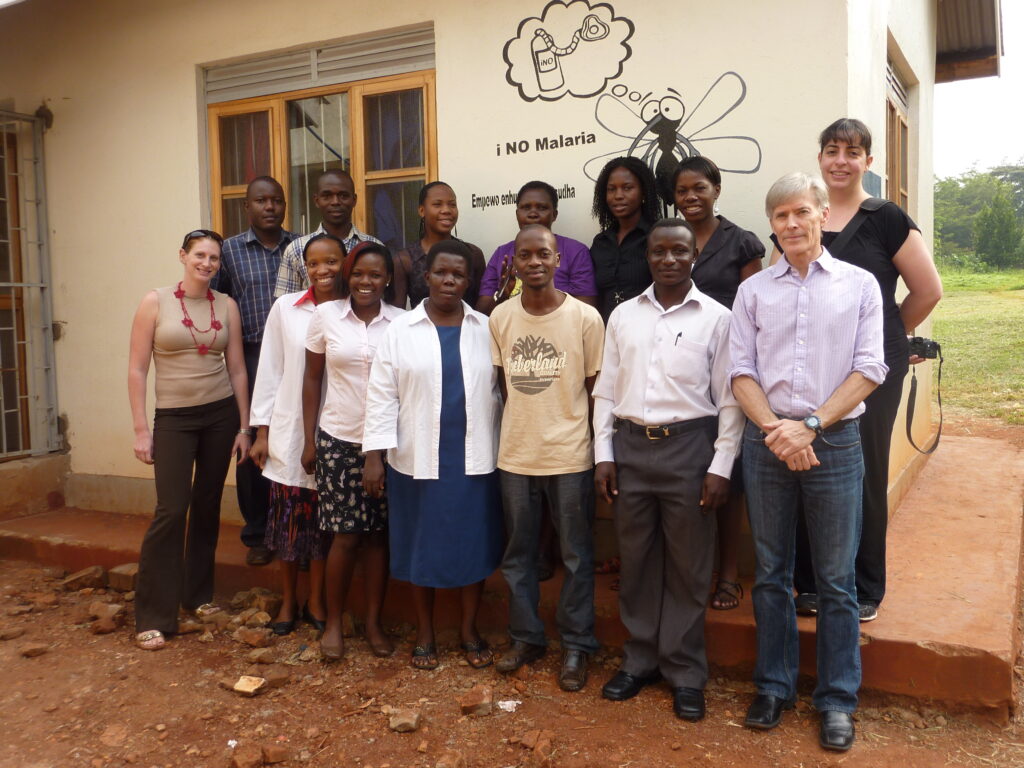April 25, 2023
By Betty Zou
According to the World Health Organization’s World Malaria Report 2022, 247 million people fell ill with malaria in 2021. In the same year, there were an estimated 619,000 deaths due to the disease, with three out of four deaths in children aged under five.
With the right prevention tools and treatments, the WHO’s ambitious targets of reducing global malaria incidence and mortality rates by at least 90% by 2030 can become reality and accelerate progress towards eradication.
Getting there requires innovations that have been purposely designed with implementation and impact in mind. Through their work on new diagnostics, vaccines and treatments, members of the University of Toronto-based Emerging and Pandemic Infections Consortium are doing just that.
“In our lab, we focus on the three D’s – how do we design research to reduce deaths, disability and wasted healthcare dollars?” says Kevin Kain, a senior scientist and tropical diseases expert at the University Health Network’s Toronto General Hospital.
Over the past three decades, Kain has built a translational research program that aims to improve outcomes for the most vulnerable populations affected by malaria — pregnant people and children.
Malaria is an infectious disease caused by the Plasmodium species of parasites, most commonly Plasmodium falciparum, that are transmitted by mosquitoes. When a P. falciparum infection occurs in pregnancy, it increases the likelihood of adverse birth outcomes, in particular preterm birth.
Seminal work by Kain’s group showed that malaria can cause blood vessels to become leaky which, in turn, can lead to severe and fatal infections. When a pregnant person becomes infected, blood vessel development in the placenta is impaired, leading to low birth weights and preterm birth because there aren’t enough blood vessels to adequately support the rapidly growing fetus.
“The question became, can we find an inexpensive, accessible and culturally appropriate intervention that we could give to pregnant women in low-resource settings?” says Kain, who is also a professor of medicine and laboratory medicine and pathobiology in the Temerty Faculty of Medicine at U of T.
In a 2018 paper published in Science Translational Medicine, Kain and his team showed that in animal models of malaria in pregnancy, supplementing the diet with a single amino acid called L-arginine enabled the placenta to grow more blood vessels and improve birth outcomes.
They have now received funding to test their idea in a randomized placebo-controlled trial of 3,000 women in Kenya. If the strategy is successful, it would significantly lower preterm birth rates among the tens of millions of women at risk of malaria in pregnancy, thereby reducing the multigenerational impact of malaria globally.
The same research that uncovered the connection between malaria, leaky blood vessels and birth outcomes also laid the foundation for a new diagnostic test that could dramatically change how children with malaria and other infections are cared for.
“As a clinician, it struck me that I would see 20 kids with the same infection but often only one of them went on to develop severe or fatal disease while the others didn’t. However, it was very difficult to determine which child was at risk when they first arrived,” says Kain.

His team started looking for markers in the blood that could serve as early warning signs that the blood vessels were starting to destabilize, indicating a higher risk of severe and fatal malaria. Not only did they find these biomarkers, but the researchers also showed that they were predictive of severe infection in many other cases including bacterial sepsis and pneumonia.
Kain is now working with an international consortium of academic and industry partners to turn these discoveries into an affordable and easy-to-use clinical tool. Their goal is to develop a rapid point-of-care test that could be deployed in low-resource settings to help healthcare workers more accurately triage which children with fevers can be safely sent home, treated as an outpatient or admitted to a hospital, possibly for intensive care.
“It’s a test that we hope will save lives and save healthcare resources by preventing children with self-limited infections from being unnecessarily admitted and overtreated with antimicrobial drugs,” he says.
Kain started his research career in infectious diseases working on the first-generation malaria vaccine that was approved by the WHO last year. The vaccine — a world first — requires four doses and only offers short-term protection in infants.
“It was the first time that a vaccine against a human parasite was approved but there’s room for improvement,” says Jean-Philippe Julien, a senior scientist at the SickKids Research Institute.
That’s where his work comes in.
In a paper published earlier this month in npj Vaccines, Julien and his team used a reverse vaccinology approach to design a more effective and longer lasting second-generation malaria vaccine.
Reverse vaccinology starts by first identifying the most potent antibodies against the pathogen of interest, and then working backwards to create a vaccine that can elicit those specific antibodies. The strategy was used successfully in the development of highly effective vaccine candidates against respiratory syncytial virus, the second global leading cause of death during a child’s first year (the first being malaria).
Using this approach, the researchers went through 145 design iterations before arriving at a vaccine candidate with five features that, when combined, dramatically improved the antibody response in mice. They are now establishing a strategic partnership to evaluate this vaccine candidate in humans.
“Our ultimate goal is to have a multicomponent malaria vaccine that can target the different life stages of the parasite,” says Julien, who is also an associate professor of biochemistry and immunology at U of T.
The vaccine candidate described in their new study provides the anti-infection component to reduce the likelihood that a person will contract malaria. For those who do, his team is engineering additional vaccine components that could reduce the disease’s severity and break the cycle of transmission back to mosquitoes and other people.
Both Kain and Julien emphasize that for any innovation to have real-world impact on reducing the burden of malaria, it must be appropriate and accessible for the local communities where the disease is endemic.
“Appropriate technology to us means culturally acceptable, inexpensive, rapid and able to inform clinical decision making,” says Kain.
For Julien, this means designing their vaccine candidates so that they can be manufactured at low cost while still eliciting strong and durable immunity with fewer doses.
“It’s unlikely that malaria will be solved by deploying very fancy tools. The technologies you need to deliver have to be extremely accessible,” he says. “To make discoveries for global health more translatable, we have to engineer them with accessible features from the beginning.”


